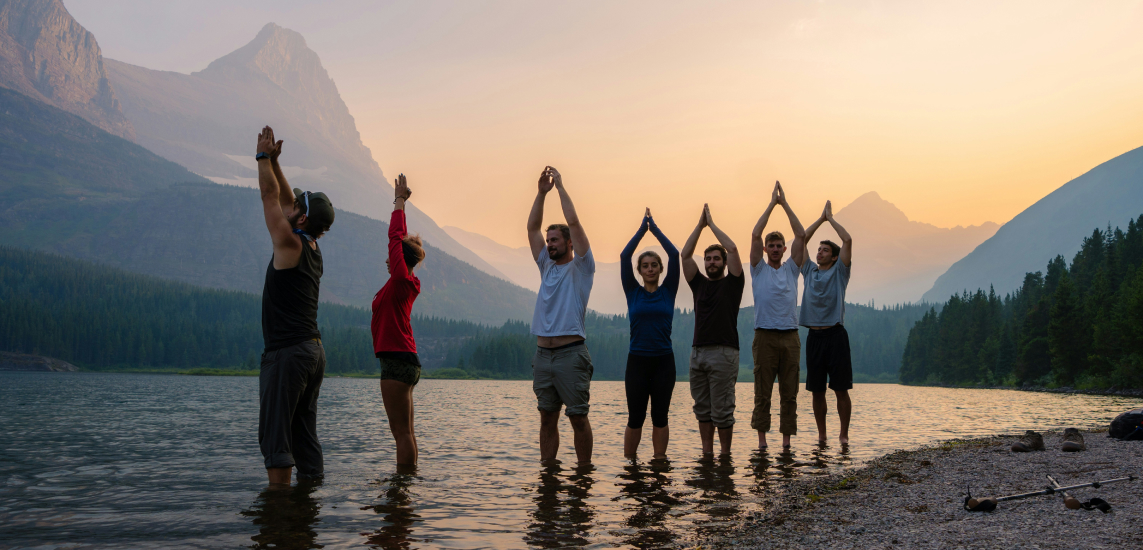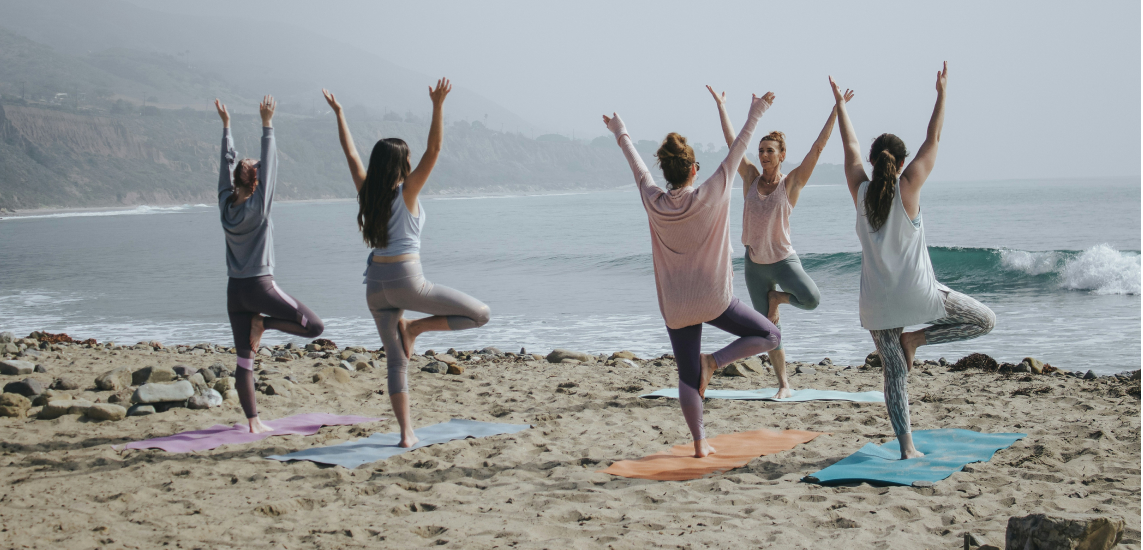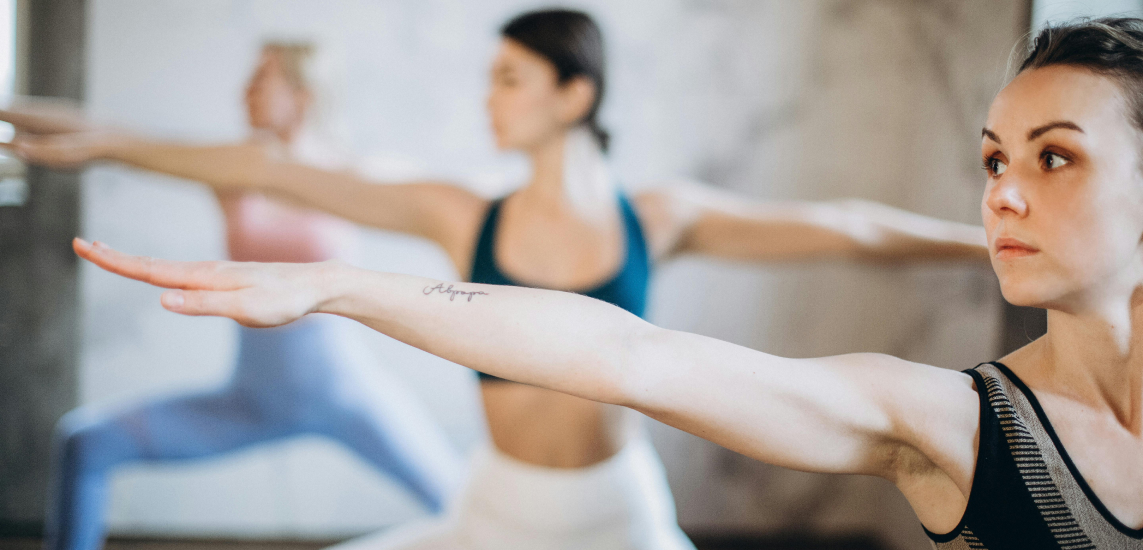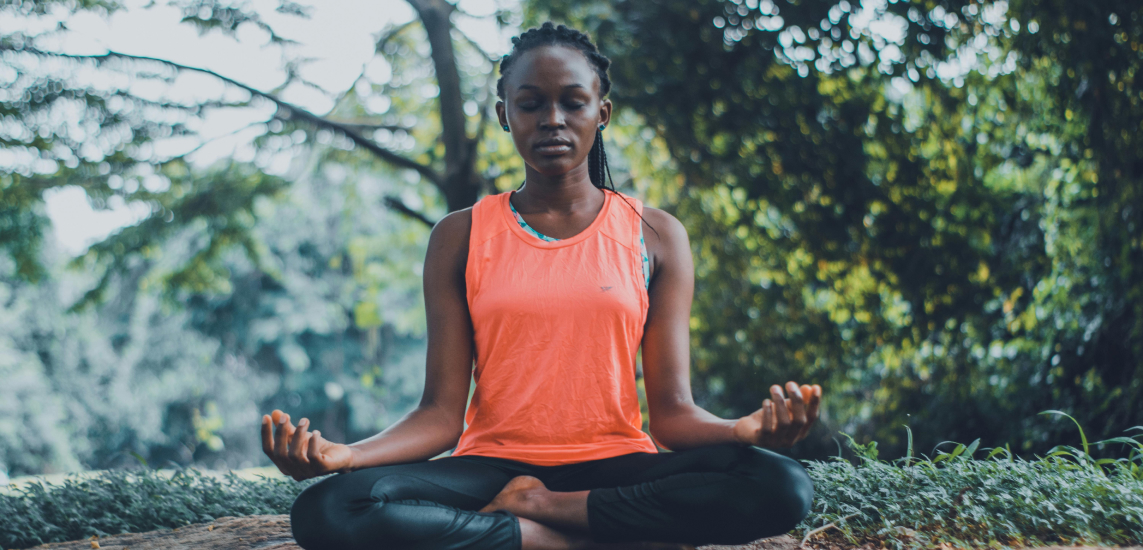This article was created using insights from Insight Timer’s experienced retreat leaders.
Planning your first yoga retreat is an exciting milestone in your teaching journey, but without proper preparation, even the most well-intentioned retreat can become stressful for both you and your participants. Whether you’re dreaming of hosting week-long retreats in Bali or intimate weekend getaways in your home country, avoiding these common pitfalls will help you create a seamless experience that nurtures personal growth and builds community.
From selecting the perfect retreat center to pricing your offering competitively, we’ll guide you through the key mistakes that can make or break your first retreat. Whether it’s your first-ever yoga retreat or you’re just looking to refine your process, here’s what seasoned retreat leaders want you to know before you begin.
Key takeaways
- Clarifying your yoga retreat’s purpose, audience, and goals from the beginning helps guide every decision you make—from location to pricing to the daily schedule.
- Avoid common pitfalls like overpacking the itinerary, skipping a marketing plan, or underestimating the importance of clear communication and legal safeguards.
- Your own self-care as an organizer is just as important as your planning checklist—building in time to rest ensures you can lead with presence and energy.
- Listing your yoga retreat on Insight Timer connects you with a global audience, streamlines logistics, and supports you in creating impactful, nourishing experiences for your community.
Common misconceptions about retreat planning
If you’re dreaming of hosting your first yoga retreat, you’re probably imagining serene mornings of practice, meaningful connections, and transformative moments. While all of that is absolutely possible, there are a few common misunderstandings that can trip up first-time retreat leaders. As Ashley Baer, an Insight Timer retreat leader, notes:
“There’s a big difference between teaching a single yoga class and leading a multi-day retreat experience. The preparation and energy required are completely different.”
One of the biggest misconceptions is that retreats are simply extended yoga classes in a beautiful location. In reality, organizing a retreat requires careful consideration of logistics, participant needs, and business fundamentals.
Another common myth is that any scenic location will automatically create a magical retreat experience. While beautiful places certainly help, the most successful retreats choose locations based on practical considerations like:
- accessibility for all participants
- quality of practice spaces
- availability of healthy food options
- how well the environment supports relaxation
The good news? By being aware of these common misconceptions, you’re already ahead of the game. Now let’s look at how to avoid the specific pitfalls that can arise during planning.
Ready to recharge in paradise? Join Ashley Baer in Ocho Rios, Jamaica for her Restore & Renew Retreat—featuring gentle yoga, meditation, and sound healing to help you reset body, mind, and spirit.
10 critical mistakes to avoid when planning your first yoga retreat
Even with the best intentions, small oversights can create big challenges for first-time retreat leaders. Let’s walk through the most common pitfalls we see to help you create truly transformative experiences. Understanding these key areas will help you plan with confidence and avoid unnecessary stress.
Not defining your retreat’s purpose and goals
When planning your first retreat, it’s easy to get excited about all the possibilities—the beautiful location, the inspiring practices, the meaningful connections. But before diving into those details, let’s start with the heart of your retreat: your intention.
Gloria Baraquio, another Insight Timer retreat host, emphasizes:
“I would advise you to get clear about your intention, run the numbers, and see what good can come of this retreat, whether itʻs financial, professional, or spiritual.”
Consider these key questions to help clarify your vision:
- Is this primarily a relaxation retreat focused on rest and renewal?
- Are you creating a deep immersion into yoga philosophy and advanced practice?
- Will you blend yoga with other activities like hiking or surfing?
This clarity will naturally attract the right participants and help you make confident decisions as you plan.
Looking for a yoga retreat that nourishes both body and purpose? Join Gloria Baraquio in Oahu, Hawai’i for the Mindful Money Retreat—a transformational journey that blends daily yoga and meditation with empowering financial wellness for modern women.
Overlooking your target audience’s needs
Your retreat will be most impactful when it’s created with a specific person in mind. Think about who you’re designing this experience for. Are they new to yoga or seasoned practitioners? Do they want structure or spaciousness? Are they looking for weekly classes or a chance to deepen their practice in a more immersive setting?
When you tailor your retreat to your audience’s preferences—whether that means offering healthy food, accommodating dietary restrictions, or creating moments of solitude—you’ll build an experience that truly resonates.
On the other hand, if you try to appeal to everyone, you may miss the mark for the people who would have loved what you uniquely offer.
Failing to visit and familiarize yourself with the retreat location
Booking a venue based on photos and promises? It’s a common shortcut, but one that can lead to surprises. Ashley Baer shares:
“Not being familiar with the property is a common mistake. Make sure you have stayed and visited the location thoroughly before attempting to host guests.”
This helps you understand the space, spot any logistical hiccups, and envision how your yoga classes, group experiences, and free time will unfold. During your visit, assess these key factors:
- Noise levels: Is there disruptive traffic or construction nearby?
- Practice spaces: Are yoga areas properly equipped with mats and props?
- Guest accommodations: Do rooms promote rest with comfortable beds?
- Natural surroundings: Does the location offer access to nature?
Overloading the schedule with activities
It’s tempting to pack the schedule with all the things—yoga, meditation, workshops, outings, group meals, and more. But more isn’t always better. Ashley reminds us:
“Having too many activities scheduled can be overwhelming. Allow for downtime and integration of the practices. You are not a tour guide!”
Participants need time to breathe, reflect, and integrate. Ask yourself:
- Is there room in the day for quiet?
- Are there breaks between sessions?
- Will people have time to journal, nap, or simply be?
Spaciousness is where transformation often happens. Participants will appreciate having time to process their experience.
If you want help building an itinerary that flows, check out our guide to creating the perfect yoga retreat itinerary—complete with tips for balancing movement, rest, and meaningful connection.
Ignoring budget and pricing considerations
It’s easy to underestimate the real retreat costs, especially when planning your first yoga retreat. Lodging, food, staff, insurance, transportation, and marketing all add up—and don’t forget hidden expenses, like printing materials or last-minute changes!
Set your budget early and revisit it often. Make sure your pricing feels fair and sustainable for you and your participants. And remember: Charging more doesn’t mean you’re greedy. You’re investing time, energy, and resources to create something truly meaningful.
Neglecting to create a realistic marketing plan
You’ve booked the venue. You’ve built the vision. But have you thought about how people will find you?
Gloria Baraquio cautions:
“Folks get so excited about their vision and destination that they book a venue and secure teachers, but they don’t have a solid marketing plan to sell the retreat… They find themselves scrambling to fill spaces and pay for all the things they committed to.”
Marketing a yoga retreat takes time, consistency, and care. You can use your newsletter, social media, local events, and personal networks to spread the word. Using a retreat listing platform, like Insight Timer, is also an easy way to reach a wider audience. With Insight Timer, you’ll gain access to thousands of wellness and yoga enthusiasts around the world.
Failing to communicate clearly with attendees
Clarity creates ease. Your participants should know what to expect—what to bring, what’s included, what the daily schedule looks like, and how to get to the venue.
Lack of communication often leads to anxiety or confusion, which can cloud the retreat experience. A few helpful things to outline include:
- what’s provided (and what’s not)
- arrival/departure info
- sample daily flow
- accommodation details
- any policies around refunds or cancellations
This helps everyone arrive feeling informed and grounded—ready to connect, practice, and receive.
Looking for a retreat location that aligns with your values? Check out our roundup of the best eco-friendly yoga retreats for inspiration on sustainable venues that support both inner and outer well-being.
Overlooking the importance of contracts, waivers, and insurance
Legal and financial safeguards are easy to forget in the excitement of planning—but they matter. Gloria shares:
“Be as honest and clear as possible about what is offered and what is not. Have waiver forms and contracts with the venue/chefs, and require that each guest have insurance.”
Protect yourself, your guests, and your collaborators by using written agreements and having participants sign waivers. Requiring travel or health insurance is great in case any challenges arise either leading up to or during the retreat. These steps may feel formal, but they actually allow everyone to relax more deeply into the experience.
Neglecting self-care as an organizer
It’s easy to pour your heart into every detail—crafting the schedule, responding to emails, supporting participants, and managing the energy of the entire group. But when you’re constantly in “go” mode, it’s only a matter of time before exhaustion creeps in. And when you’re depleted, it becomes harder to stay present, grounded, and connected.
Ashley Baer shares:
“Create space for your downtime as you are leading and always ‘on.’ You need to take time to reset yourself.”
Self-care isn’t a luxury—it’s part of your responsibility as a retreat leader. Build moments into the retreat where you can step away, whether to take a walk, have a quiet morning alone, or practice meditation.
Not having a backup plan for unexpected challenges
Even with the most detailed planning, unexpected challenges are part of the process. Flights get delayed. A rainstorm cancels your beach yoga class. A participant experiences emotional overwhelm. These moments don’t mean your retreat has failed—they just mean you’re human, and so is your group.
What makes the difference is how you respond. Do you freeze, scramble, or get discouraged? Or do you have systems in place and trust in your capacity to adapt?
Gloria Baraquio reminds us:
“As with most issues or conflicts, people want to feel seen, heard, loved, respected, or appreciated. Carve out time to talk out a conflict and look for solutions for resolution.”
Be sure to have practical backups for logistics, such as:
- a covered space for yoga in case of rain
- spare rooms if someone needs privacy
- a plan for handling dietary restrictions if a chef cancels
- flexible timing in your schedule to move things around
Reach a global audience with Insight Timer retreats
Insight Timer offers a powerful global platform for retreat leaders to share their events with an engaged community of yoga, meditation, and wellness seekers. When you list your yoga retreat on Insight Timer, you’re instantly connected with a worldwide audience of people who are actively looking for meaningful, intentional experiences—whether in their own country or across the world.
The platform simplifies the behind-the-scenes logistics so you can focus on what matters most: crafting transformative retreats. Whether you’re hosting a weekend gathering in the mountains or a week-long retreat by the sea, Insight Timer makes it easier to bring your vision to life—and into the hands of the people it’s meant for.
Frequently asked questions about mistakes to avoid when planning a yoga retreat
How do you structure a retreat?
Start by clarifying your retreat’s purpose—is it focused on relaxation, spiritual deepening, or yoga practice? From there, build a balanced schedule that includes daily anchors like morning yoga, meditation, and group meals, as well as open time for rest or reflection. It’s important not to overpack the agenda so participants can truly settle in and integrate. A well-structured retreat feels supportive but spacious, offering both guidance and freedom.
What do you do on a mindfulness retreat?
A mindfulness retreat usually includes practices like guided meditation, gentle yoga classes, nature walks, and journaling. Some retreats also offer workshops or quiet contemplation time to help participants reconnect with themselves and slow down. The goal is to create space for presence, clarity, and personal growth.
Can a beginner go on a mindfulness retreat?
Absolutely! Many yoga retreats and mindfulness experiences are created specifically for beginners or those just starting their yoga journey. Look for retreats that welcome all levels and offer clear, compassionate instruction in both meditation and yoga practice. A supportive environment can make all the difference, especially for someone attending their first-ever yoga retreat.
How do you host your first retreat?
Start with your intention—why do you want to host this retreat, and who is it for? From there, choose a venue that fits your goals, build a realistic budget, and map out a clear schedule that balances structure with free time. Don’t forget to promote your retreat early and plan for your own self-care during the experience. Hosting your first retreat is a learning process, so give yourself grace and stay flexible.
What should I look for in a retreat venue?
Choose a retreat center that aligns with the energy and intention of your event—whether that’s a peaceful mountain hideaway, beachside villa, or rustic eco-lodge. Make sure the location is accessible, has the right facilities for your classes and group meals, and can accommodate any dietary restrictions or schedule adjustments. Visiting the venue in person is ideal so you can get a feel for the space and anticipate any challenges.







